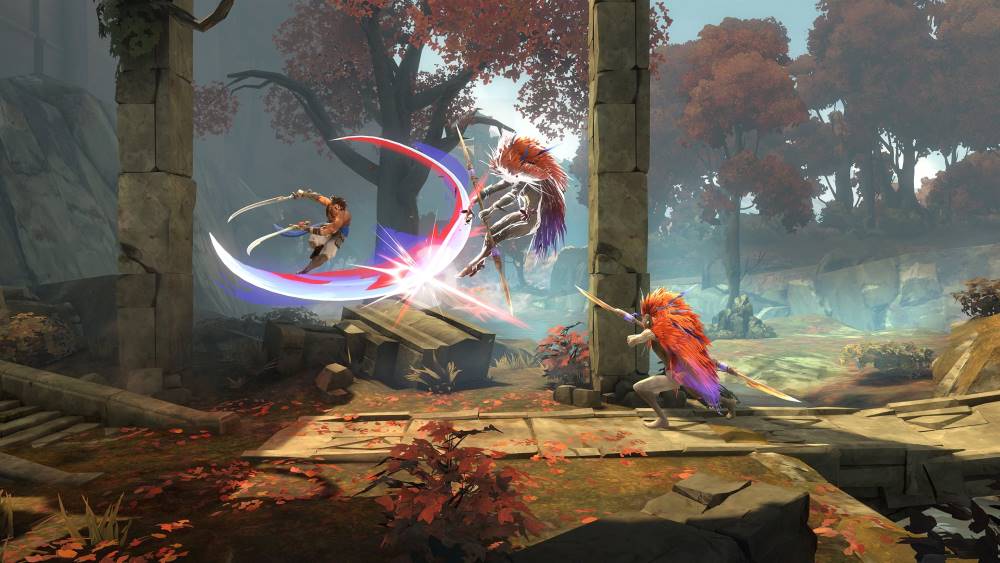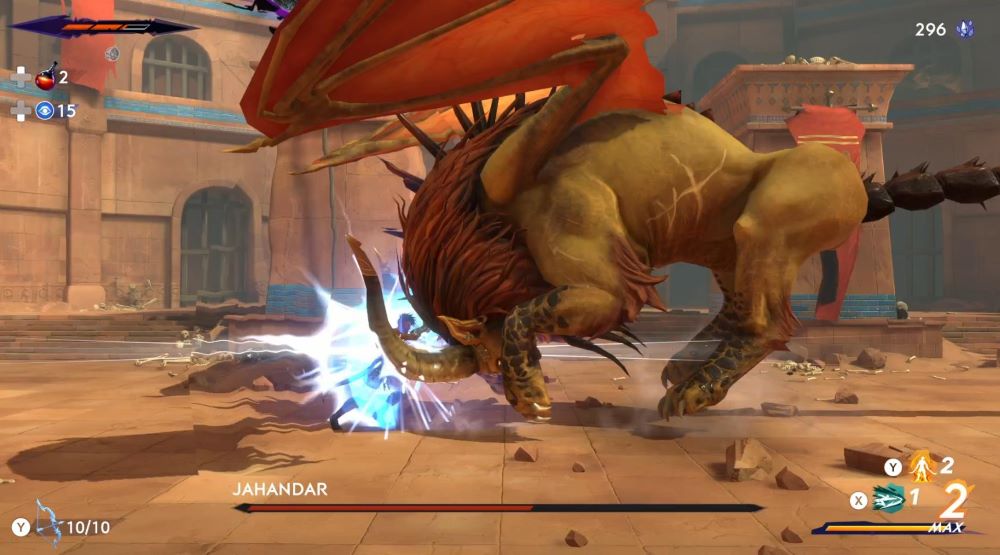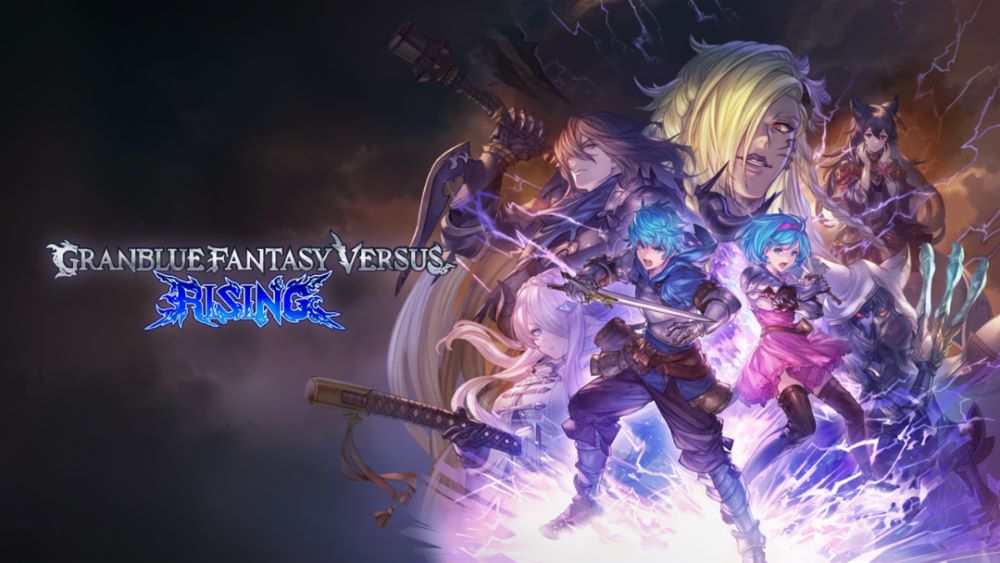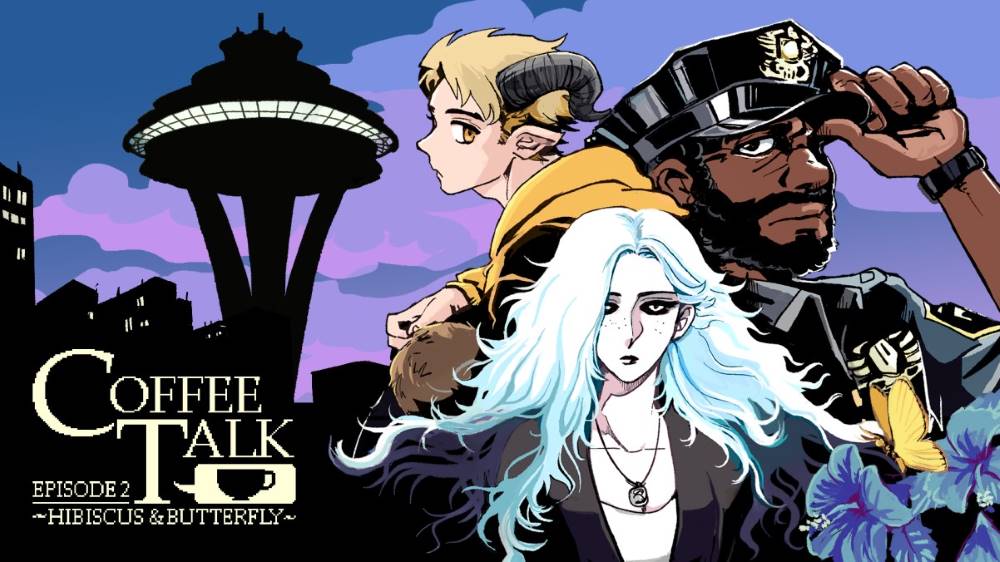Prince of Persia: The Lost Crown Review
Prince of Persia: The Lost Crown Review
It seemed like yesterday when I was seated at the YouTube Theater during Summer Game Fest 2023 when this new Prince of Persia game was first revealed. Fan reactions at that time were mixed. While some loathed the prospect of a new entry in the series that wasn’t the Sands of Time remake, others were intrigued by this upcoming 2D platformer.
Over the months to come, previews came in praising this latest entry for various reasons, and it was surprising, and refreshing, to see Ubisoft step back from its obsession with open-world blockbuster titles and scale it down to something more “experimental,” if you could even call it that. Prince of Persia had somehow returned to its platforming roots, and The Lost Crown shines like a jewel because of it.
Prince of Persia: The Lost Crown tells the story of Sargon, one member of a group of elite warriors called the Immortals. These warriors are defenders of the kingdom and protectors of Queen Thomyris of Persia. Unsuspectingly, the Queen’s son, Prince Ghassan, is kidnapped and the Immortals are tasked to scour Mount Qaf, a mysterious location that plays home to Simurgh, God of Time and Knowledge, to rescue the Prince and restore order.
Without going through the story’s details to avoid spoilers, one of the most noticeable elements of the game is its vibrant and colorful take on the series, incorporating bold strokes, sharp lines, and flashy effects that work well with the genre. It is a stark departure from what Ubisoft is usually known for from Assassin’s Creed and FarCry, but going in this direction was one of the best things they could have done.

Simplifying the art style to a certain level meant that the game could prioritize performance, and Prince of Persia: The Lost Crown is a silky smooth affair that plays as good as it looks. Playing on a PS5 for this review paired with a 120 FPS capable display, the game flowed from screen to screen with hardly any hitches, and it’s hard to encapsulate the feeling of a 120 FPS game into words. Everything felt fast and snappy, and the almost non-existent loading screens certainly helped keep the focus on the action.
One great thing about Prince of Persia: The Lost Crown is its cross-progression feature, allowing players to pick up the game on their souped-up current-gen console like the PS5 and then take it on the go with the Switch. Using Ubisoft Connect, cloud saves will be available, and playing on the Switch is a fine 60 FPS experience, albeit at a very toned-down visual quality.
Of course, for a title like Prince of Persia: The Lost Crown, playing on more powerful consoles is ideal as it takes advantage of the beauty and vivid colors that the game offers, but the Switch version is no slouch despite its resolution going down to 720p in handheld mode, and 1080p while docked. It runs smoothly with serviceable visuals, and could be a last option for on-the-go gaming unless you have some of the more powerful PC handhelds that can run the Ubisoft launcher.

The smooth and fast-paced gameplay of Prince of Persia: The Lost Crown perfectly complements its dynamic combat mechanics, playing somewhat like a fighting game of sorts in some instances due to the various combos you can pull off, even launching enemies in the air, with some enemies having properties like unflinching that will require you to change up your approach because they can’t be knocked back or down.
Because of this, there’s a surprising amount of depth to the combat system of the game. Unlike other Metroidvania titles that rely mostly on a vast arsenal, weapon upgrades, and various abilities, Sargon will rely on his dual blades for the majority of the game to see his quest through. Prince of Persia: The Lost Crown switches gameplay up by adding depth to his move list via one major weapon instead of several.
Sargon will gain new abilities and weapons as he forges deeper into Mount Qaf. As with Metroidvania titles, these new tools will open up new pathways and up to 13 biomes to explore, bringing our hero to the winding Hyrcanian Forest, the treacherous Pit of Eternal Sands, the depths of the Raging Sea, and much more. The environments are as stunning as they are varied, with each playing host to over 60 enemies and bosses that will make the journey tougher.
Prince of Persia: The Lost Crown is not an easy game by all accounts. It employs a certain level of difficulty that will require a mastery not only of Sargon’s offensive but defensive capabilities as well. Parrying enemy attacks is a vital skill that will save your skin, and some reckless attacks by the enemy, as marked by a yellow light, mean that Sargon can dish out a damaging counterattack when the parry is timed properly. Some attacks are unstoppable (marked in red), so get out of the way!

Sargon will also gain access to powerful abilities called Athra Surges, each with unique powers that can take on either an offensive or defensive purpose. Players can fill up the Athra Gauge by either attacking, parrying, or defeating enemies, and can unleash a Surge to help them out in a time of need. Some Surges, like Arash’s Ray, will pierce enemies with a blinding laser that can be used mid-air, while some like Bahman’s Breath can open up a healing circle below Sargon to replenish his health over time.
Some of the more interesting elements of combat and exploration open up upon gaining the more advanced time powers. While double jumping and air dashing are usual elements in similar titles, Prince of Persia: The Lost Crown uses its “Sands of Time” references to great effect by giving Sargon the ability to shift himself back to a spot after placing a mark on it, and can be used to either get himself out of danger or surprise the enemy with an offensive ability from behind. As you can imagine, this further elevates the combat experience, and it’ll only expand once you gain more powers.
When not fighting foes around Mount Qaf, Prince of Persia: The Lost Crown treats players to puzzles that will make use of their arsenal to overcome. Some areas will require backtracking if you don’t have the necessary tools to deal with the puzzle at hand, but once you do, some brain power and strategic use of these tools will be key.
Some puzzles are pretty basic platforming fare, with timed platforms or spiked walls that require air dashes and wall jumps to conquer. Some will require a bit more work, with levers and cogs that need turning with the use of your trusty Chakram, crossing retractable bridges and platforms before recalling the Chakram back to your care.

Exploring the huge map will reward Sargon’s persistence and patience with many trinkets and amulets that can be equipped to slightly alter your abilities. Some will increase your attack strength, while others will increase your poison resistance, so you’ll have to come up with a good loadout to overcome certain challenges because these amulet slots are limited.
Side quests also abound, and while these aren’t your Witcher-level quests that are a fulfilling narrative affair, they are rewarding and certainly provide players with extra incentive to search every nook and cranny of Mount Qaf. Apart from the usual Metroidvania tropes like destructible walls, Prince of Persia: The Lost Crown is engaging from one end of the map to the other.
And speaking of the map, it is huge! I don’t want to show the fully revealed map to avoid spoilers, but there’s so much to explore and uncover in Prince of Persia: The Lost Crown. If you’ve played similar titles (Castlevania: Symphony of the Night and Bloodstained come into mind), then you’ll know what to expect. With interconnected pathways, fast travel points, and shortcuts in between, the map feels well-thought-out and well-designed, with each biome having its own gimmicks that give them a unique twist.

Over its exceptional gameplay and combat aspects, Prince of Persia: The Lost Crown also excels in its audio, featuring a mix of strings and drums that give off an upbeat Middle Eastern vibe that plays well with the game. Voice performances are delivered well, and the game is a delight to the ears as it is to the eyes.
One aspect of games that don’t receive too much of the spotlight is accessibility, but Prince of Persia: The Lost Crown makes it so that even physically challenged players can enjoy it. Its most basic settings can be tweaked, such as having a separate slider for enemy health and damage, but the game also gives players the option to make parry and dodge windows more forgiving. There’s even an option to assist players during the tough platforming sequences, along with a “guided” mode showing the location of the next objective.
Another feature of Prince of Persia: The Lost Crown that I particularly liked is the Memory Shard, which allows me to take a literal snapshot of an area that is either locked or contains a treasure that I can’t reach for now, and stick that screenshot on the map so I can get back to it later. It’s super useful for players with a bad memory like me, showing me exactly what that part of the map holds rather than just a general locked area marker. The screenshot is even shared across platforms, making for a nice touch when switching to the Switch from the PS5.
On the PS5, I noticed some very minor frame rate stutters when the camera zooms out to reveal more of the area you are currently in. There aren’t many instances where this happens, so this hitch is isolated to just those areas. Boss fights and normal combat and exploration runs are silky smooth and should not pose any issue to most players.
Prince of Persia: The Lost Crown can be beat in about 20 hours, depending on how you play and the difficulty level you choose to run the game with. It took me about 22 hours to roll credits with some side quests in between and several retries during boss battles on normal difficulty, along with some wandering and getting lost from time to time. At some point, it did feel like the game was overstaying its welcome, and maybe I would have felt more comfortable if the main story lasted a few hours shorter.
What We Liked:
- Amazing and vibrant art style
- Slick and responsive performance and controls
- Challenging but fair enemies and bosses
- Content-rich for its price
- Cross-progression via Ubisoft Connect
What We Didn’t Like:
- Visual quality on the Switch version is understandably watered down
- Minor frame rate stutters on PS5 when the camera zooms out to reveal more of the area
- A tad bit too long for my taste
Verdict: Buy it!

Overall, Prince of Persia: The Lost Crown is a supremely stylish and stellar start to 2024, and coming from a company that usually just spews out open-world titles, this is such a welcome entry in their portfolio. Developing this as a “smaller” title worked wonders for the game, as Prince of Persia fits perfectly in a Metroidvania setting that puts gameplay at the forefront of it all.
Prince of Persia: The Lost Crown’s audiovisual presentation is top-notch, dressing up the game in a flashy array of effects and colors that provide a kick of personality that successfully modernizes the series. The soundtrack is one to write home about, where its mix of strings and bass and some Middle Eastern flair make for an engaging run through Mount Qaf.
*Prince of Persia: The Lost Crown was reviewed on PS5 and Nintendo Switch with a review code provided by the publisher.



